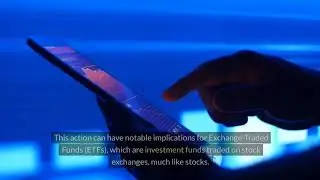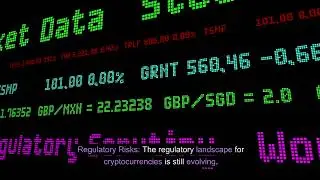Protect Against Inflation With ETFs: 5 Examples of Combatting Inflation with ETFs
Welcome back to our channel, where we delve deep into the world of finance to equip you with the knowledge you need to make informed investment decisions. Today, we're exploring a topic that's become increasingly pertinent in #economic conversations: #inflationprotection. With #inflationary concerns looming large, #investors are seeking refuge in #assets that can #safeguard their #portfolios against the erosive effects of rising prices. And in this quest for #resilience, Exchange-Traded Funds (#ETFs) emerge as a beacon of hope. Join us as we unravel the intricacies of ETFs offering #inflationprotection and uncover the avenues they present for investors seeking to shield their wealth. Before diving into ETFs, let's grasp the concept of #inflation and why it poses a significant threat to investors. Inflation is the rate at which the general level of prices for #goods and #services rises, resulting in a decrease in purchasing power. While moderate inflation is considered healthy for #economicgrowth, excessive inflation can erode the value of #money over time, impacting savers and investors alike. Inflation can be triggered by various factors, such as increased demand, supply chain disruptions, or expansionary monetary policies. Given the adverse effects of inflation on purchasing power, investors seek assets that can outpace inflation and preserve their real returns. Traditional investments like bonds and cash may falter in high-inflation environments, as their fixed returns fail to keep pace with rising prices. This underscores the importance of incorporating inflation-protected investments into one's portfolio. ETFs, with their inherent diversification and liquidity benefits, serve as an attractive avenue for accessing such assets. ETFs offering inflation protection employ various strategies to shield investors from the erosive effects of rising prices. One common approach involves investing in Treasury Inflation-Protected Securities (TIPS). TIPS are U.S. government bonds designed to adjust their principal value in line with changes in the Consumer Price Index (CPI), providing investors with a hedge against inflation. ETFs like the iShares TIPS Bond ETF (TIP) and the Schwab U.S. TIPS ETF (SCHP) offer exposure to TIPS, allowing investors to benefit from their inflation-indexed returns. While TIPS remain a popular choice for inflation protection, investors can explore alternative ETFs that offer unique strategies for combating inflation. Commodities, such as gold and silver, have long been considered inflation hedges due to their tangible nature and limited supply. ETFs like the SPDR Gold Shares ETF (GLD) and the iShares Silver Trust (SLV) provide exposure to these precious metals, offering a potential store of value amidst inflationary pressures. Real assets, such as real estate and infrastructure, can also serve as effective inflation hedges. Real estate investment trusts (REITs) and infrastructure companies often possess pricing power, allowing them to pass on increased costs to consumers. ETFs like the FCF Yield Enhanced Real Asset ETF (DFRA) and the Global X US Infrastructure Development ETF (PAVE) provide diversified exposure to these sectors, offering investors a potential shield against inflationary headwinds. In addition to traditional asset classes, investors can explore dynamic strategies for inflation protection through ETFs. Multi-asset ETFs, such as the iShares Edge MSCI Multifactor Global ETF (ACWF), employ a diversified approach by allocating across equities, fixed income, and other asset classes. These ETFs utilize factors like quality, value, and low volatility to construct portfolios resilient to inflationary environments, offering investors a comprehensive solution for protecting their wealth. As we wrap up our discussion, it's evident that ETFs play a crucial role in providing investors with access to inflation-protected assets. Whether through TIPS, commodities, real assets, or dynamic strategies, ETFs offer a diverse array of options for safeguarding portfolios against the erosive effects of inflation. By incorporating inflation-hedged ETFs into their investment approach, investors can enhance the resilience of their portfolios and navigate uncertain economic landscapes with confidence. Remember, knowledge is the most potent weapon in the arsenal of investors, so stay informed, stay diversified, and stay ahead of the curve. Thank you for tuning in, and until next time, happy investing!































